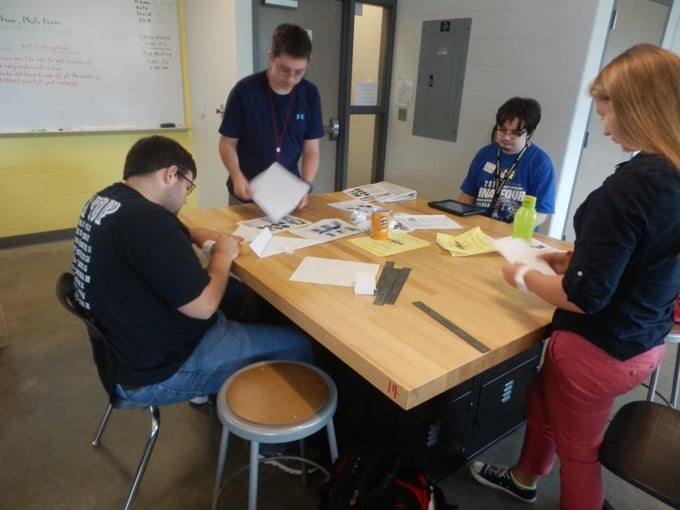William Glenn Walker is an aerospace engineer and PLTW instructor who has earned a Master of Education in Secondary Math. William was named National CEAI Teacher of the Year in 2006. He teaches at Franklin County Career & Technical Center in Frankfort, Kentucky.
For years I had taught advanced mathematics to juniors and seniors. I really enjoyed the math, especially the application problems. Since I was also an engineer, I would often bring in real-life application problems from the world of engineering into my math classes. Table groups and team problem solving were already a part of classroom layout.
Then, I was introduced to Project Lead The Way. It was astounding! Here was a curriculum laid out the same way my brain was wired … a logical progression through real-world problems, applying the advanced mathematics and science concepts in a practical way. It was a dream classroom!
I knew from the first moment that PLTW Engineering classes were what I wanted to teach. Not only did the curriculum excite me, but it also engaged and motivated my students to apply what they had been learning in practical ways. Students look forward to my classes, and I look forward to seeing what we will discover anew each day. PLTW is a double blessing for teacher and student, and you can literally see the progression of students from year to year as they become more focused on engineering concepts, more mature, and start thinking innovatively in everything they do.
As Computer Integrated Manufacturing (CIM) is considered our senior-level PLTW class at our school, I get to step back and watch my seniors take charge of their learning. Since CIM is composed of several long-term projects, students quickly develop into teams where natural leaders guide the group into planning out the sequence of steps necessary to solve the problem. There is peer tutoring, active brainstorming, trial and error, support, and encouragement throughout the room. It is exciting to these engineers of the future step into that role prior to leaving high school.
My CIM students have been able to create milled parts from 3-D models on the computer, program robots to perform various tasks, and skillfully employ robotic arms to do pick-and-place actions.
The culminating project is the integrated factory consisting of at least three cells of operation. Teams of three to four students build a cell. Cell teams then must coordinate the integration of these cells into a working factory that produces a final product from raw materials. The whole class has to begin as one group to brainstorm and choose the factory to build. For the last few weeks of school, the classroom is a bustle of activity from the teams as they strive to complete their portion of the factory on time. They have to manage process flow, arrange for proper sequencing of steps, and work through tradeoffs between efficiency and costs. You really see the real-world problem solving of getting all of the components working together!
Parents and the community have also been enthusiastic in their support of our PLTW program. The local chapters of engineering societies are represented on our advisory council and often provide critique or financial support for our Technology Student Association (TSA) projects. In addition, our PLTW Engineering students helped coordinate a summer STEM camp for middle school students, and they did an excellent job communicating a love for engineering to the campers. Parents were invited on the final day of camp to see the robot races!
The most surprising aspect of teaching PLTW courses is to see the rapid maturity of high school students over the four years from freshman to senior. It seems that giving students the autonomy of hands-on problem solving, group interaction, and practical problems to solve stimulates them into thinking and acting like professionals. PLTW makes teaching more rewarding and fun, and it is a continual learning experience for me as well. I know many of my students will be highly successful engineers in their chosen careers.
PLTW’s blog is intended to serve as a forum for ideas and perspectives from across our network. The opinions expressed are those of this guest author.


